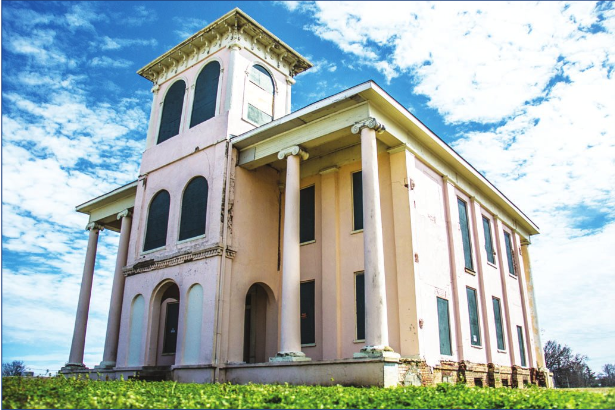Though people often immediately think of football when it comes to the culture of Tuscaloosa, there is more to the city than that – namely, architecture – said University of Alabama architectural historian Gene Ford.
Much of the city’s architectural history may be traced to 2300 17th Street, where the Drish House stands. Though the Drish House is well known, the style and craftsmanship of the house goes unnoted.
The architecture of the house is significant for a number of reasons, Ford said.
“I look at the architectural and craftsmanship of the house,” Ford said. “I look at the craftsmanship of Drish and his slaves, in their ability to build houses across town and the first two dormitories at The University of Alabama.”
Ford said Drish was an affluent Renaissance man. He not only designed the Italian/Greek style for the house, but also incorporated the relevant style of the 19th century.
Walt Maddox, mayor of Tuscaloosa, said it’s important to recognize the house as a local historic property.
“Designating the house as a local historic property provides the house with a level of protection not granted by its state and national designations, which are merely honorary,” Maddox said. “Before its designation, the house could have been demolished or altered with no review.”
Maddox said while many of the house’s original features have been altered, it still has its historic character and is an “unusual but unique mansion.”
“Dr. Drish was a well-respected and sought-after physician in Tuscaloosa, but his interests extend beyond medicine to farming, business and construction,” Maddox said.
The house features grand two-story porticoes on the front and back, with Tuscan columns on the rear. It was remodeled in the late antebellum period with a prominent Italianate tower added, Maddox said.
Ford said the Southside neighborhood captured the financial status of an entire city with just the Drish House.
“The house represented Tuscaloosa,” Ford said. “Drish had a vision of being wealthy, but after the Civil War, Tuscaloosa’s economy was wrecked and Drish went bankrupt. He couldn’t keep the plantation. People wanted to convert it into a subdivision and take what was there. Southside told the story of the inner city from prominence and prosperity to decline.”
Ford said the Drish House brings a historical value to Tuscaloosa, one that ought to be preserved.
“I am just happy to be in the project to help conserve the history of T-town,” Ford said. “Yes, football is important, but architecture is a huge thing here. It would be a crime to let the house go to the wrecking ball. My contribution was presenting the house to the Tuscaloosa City Council, in an event in which they would nominate to dedicate the house as an historic property of Tuscaloosa. I hate to see a treasure like this go away.”
Leading in today’s Crimson White:
Obasohan showing glimpses of his potential







